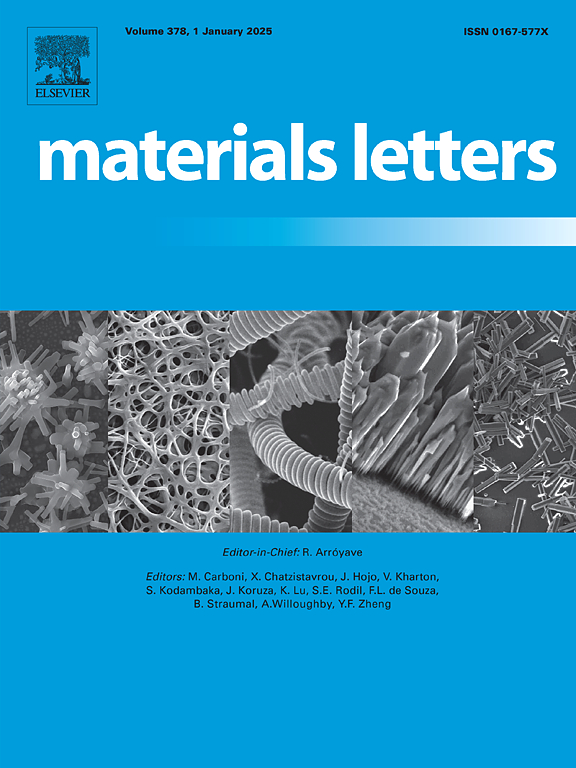Self-powered photodetector based on Sb2Se3 vertical nanorod grass
IF 2.7
4区 材料科学
Q3 MATERIALS SCIENCE, MULTIDISCIPLINARY
引用次数: 0
Abstract
This study investigates the morphology and performance of Sb2Se3 nanostructures on TiO2 layers, comparing the compact TiO2 (c-TiO2) and mesoporous TiO2 (m-TiO2) layers. Sb2Se3 nanorods on c-TiO2 are horizontally oriented, whereas vertical grass-like nanostructures form on m-TiO2. The vertical alignment enhances electron transport, reducing recombination compared to the disordered nanorods. Notably, the photocurrent of Sb2Se3 nanorods on m-TiO2 increased by nearly one order of magnitude compared to Sb2Se3 nanorods on c-TiO2 layers. To further improve photocurrent, hole transport layers of P3HT and Spiro-OMeTAD were introduced. Cross-sectional SEM images show that Spiro-OMeTAD infiltrates the voids between nanorods more effectively than P3HT, leading to better hole extraction and increased photocurrent for self-powered photodetector. These findings highlight the importance of oriented growth of Sb2Se3 and hole transport materials in enhancing charge collection efficiency.
求助全文
约1分钟内获得全文
求助全文
来源期刊

Materials Letters
工程技术-材料科学:综合
CiteScore
5.60
自引率
3.30%
发文量
1948
审稿时长
50 days
期刊介绍:
Materials Letters has an open access mirror journal Materials Letters: X, sharing the same aims and scope, editorial team, submission system and rigorous peer review.
Materials Letters is dedicated to publishing novel, cutting edge reports of broad interest to the materials community. The journal provides a forum for materials scientists and engineers, physicists, and chemists to rapidly communicate on the most important topics in the field of materials.
Contributions include, but are not limited to, a variety of topics such as:
• Materials - Metals and alloys, amorphous solids, ceramics, composites, polymers, semiconductors
• Applications - Structural, opto-electronic, magnetic, medical, MEMS, sensors, smart
• Characterization - Analytical, microscopy, scanning probes, nanoscopic, optical, electrical, magnetic, acoustic, spectroscopic, diffraction
• Novel Materials - Micro and nanostructures (nanowires, nanotubes, nanoparticles), nanocomposites, thin films, superlattices, quantum dots.
• Processing - Crystal growth, thin film processing, sol-gel processing, mechanical processing, assembly, nanocrystalline processing.
• Properties - Mechanical, magnetic, optical, electrical, ferroelectric, thermal, interfacial, transport, thermodynamic
• Synthesis - Quenching, solid state, solidification, solution synthesis, vapor deposition, high pressure, explosive
 求助内容:
求助内容: 应助结果提醒方式:
应助结果提醒方式:


